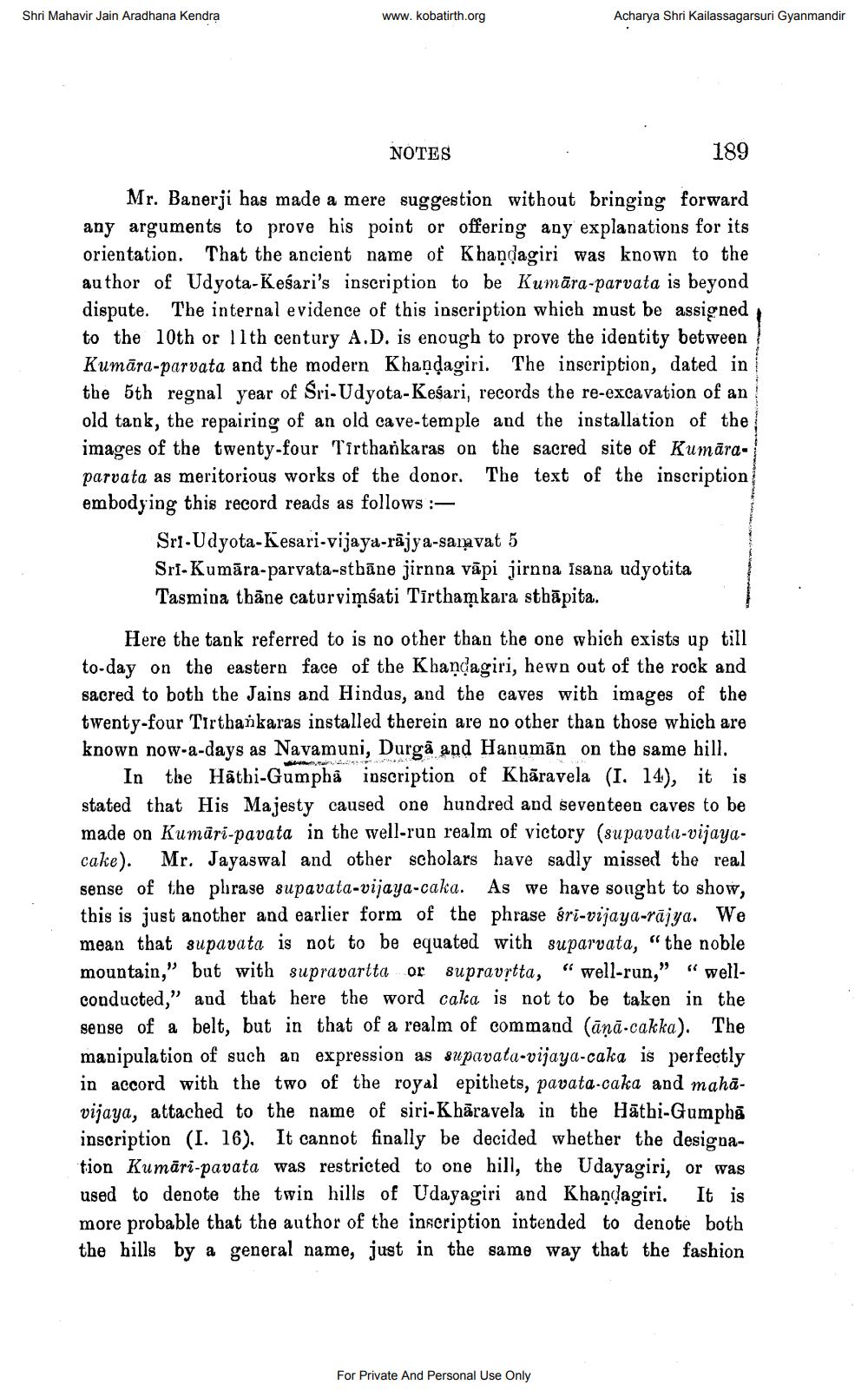________________
Shri Mahavir Jain Aradhana Kendra
www.kobatirth.org
Acharya Shri Kailassagarsuri Gyanmandir
NOTES
189
Mr. Banerji has made a mere suggestion without bringing forward any arguments to prove his point or offering any explanations for its orientation. That the ancient name of Khaņdagiri was known to the author of Udyota-Kesari's inscription to be Kumāra-parvata is beyond dispute. The internal evidence of this inscription which must be assigned to the 10th or 11th century A.D. is enough to prove the identity between Kumāra-parvata and the modern Khandagiri. The inscription, dated in the 5th regnal year of Sri-Udyota-Kesari, records the re-excavation of an old tank, the repairing of an old cave-temple and the installation of the images of the twenty-four Tirthankaras on the sacred site of Kumāraparvata as meritorious works of the donor. The text of the inscription embodying this record reads as follows :
Sri-Udyota-Kesari-vijaya-rājya-saqavat 5 Sri-Kumāra-parvata-stbāne jirnna vāpi jirnna īsana udyotita Tasmina thâne caturvimšati Tirtham kara sthāpita.
Here the tank referred to is no other than the one which exists up till to-day on the eastern face of the Khaņdagiri, hewn out of the rock and sacred to both the Jains and Hindus, and the caves with images of the twenty-four Tirthankaras installed therein are no other than those which are known now-a-days as Navamuni, Durgā and Hanumān on the same hill.
In the Hathi-Gumpha inscription of Khāravela (1. 14), it is stated that His Majesty caused one hundred and seventeen caves to be made on Kumārī-pavata in the well-run realm of victory (supavata-vijayacake). Mr. Jayaswal and other scholars have sadly missed the real sense of the phrase supavata-vijaya-caka. As we have sought to show, this is just another and earlier form of the phrase sri-vijaya-rājya. We mean that supavata is not to be equated with suparvata, “the noble mountain," but with supravartta or supravrtta, “ well-run," " wellconducted," and that here the word caka is not to be taken in the sense of a belt, but in that of a realm of command (ānā.cakka). The manipulation of such an expression as supavata-vijaya-caka is perfectly in accord with the two of the royal epithets, pavata.caka and mahavijaya, attached to the name of siri-Khāravela in the Hāthi-Gumpbā inscription (I. 16). It cannot finally be decided whether the designation Kumāri-pavata was restricted to one hill, the Udayagiri, or was used to denote the twin hills of Udayagiri and Khandagiri. It is more probable that the author of the inscription intended to denote both the hills by a general name, just in the same way that the fashion
For Private And Personal Use Only




